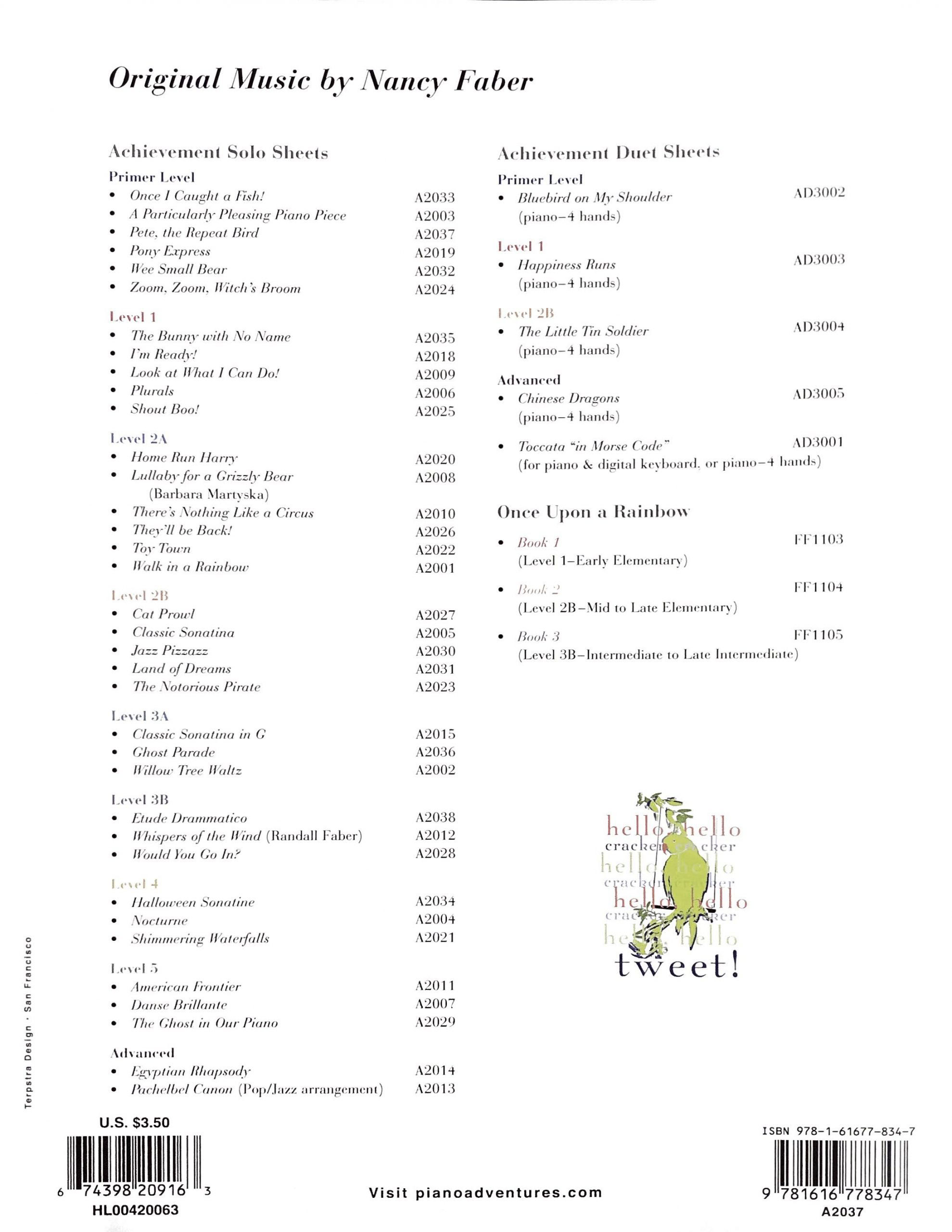
This year marks the start of my 10th year of full-time piano teaching. While I’ve been teaching for 20 years, the first 10 were part-time (alongside other careers) with generally no more than 6-10 students at a time.
Ever since I started teaching full time, I’ve found myself focusing on one or two major things each year (not always intentionally, but quite recognizably in hind-sight).
Examples include learning to use a new program, improving my teaching in a particular way or area, trying a new method with as many students as possible at once, and so forth.
Last year I suddenly felt inspired to explore and become better acquainted with the gamut of sheet music solos.
Clueless and Curious
If you ever attend an MTNA National Conference or NCKP (The Piano Conference, you know that these single sheets (priced at $2-$3) are often handed out in exchange for submitting “coupons” with contact information in the exhibit halls.
Like many teachers, I’ve never used them continuously with students. Not only are they more expensive than a book, but their intent is more to supplement than supply a student’s repertoire.
Even though I’ve been teaching for 20 years, infrequent use of sheet music solos meant I was feeling a little clueless as to what was really out there and what my favorites were.
So, last year I vowed to use them more frequently. Basically, (almost) every student had one sheet music solo in progress at all times (almost). 🙂
In future posts, I’ll be highlighting some of my favorites but first, I want to share with you 9 things I learned from this project along the way.
#1 You’ll Never Be Able to Explore them All
It literally would be impossible to trial and exhaust the entire sheet music solo repertoire list. I like to be a thorough person but had to tell myself to “let it go.”
My 30 students and I did our best though, with many even getting front-porch deliveries of solo sheets for the spring recital during the COVID-19 pandemic quarantine! 🙂
I started by looking through a list of favorite repertoire sheets I’ve been saving in Evernote over the years as well as consulting posts by other teachers including:
Firey Piano Sheet Music | Lauren Lewandowski
My Favorite Sheet Music Piano Solo’s for Piano Students | Joy Morin
Sheet Music Reviews
Halloween Piano Music for Beginners | Lauren Lewandowski
The Best Intermediate Halloween Piano Music | Lauren Lewandowski
Review: Halloween Sheet Music from Wendy Stevens | Joy Morin
#2 Check the Back of The Sheets for Ideas
Just like repertoire books, the backs of sheet music solos will often list other sheets by that composer or publisher in a series.
It’s an easy way to see an overview of all the solo-sheets from that composer and/or publisher!
Here’s an example from a Nancy Faber sheet:
#3 Students Love them for Two Reasons
Throughout the year, I would ask students how they felt about their sheet music solos. Almost every time I heard the same feedback:
- They feel special
- They don’t feel overwhelmed by getting a solo sheet as opposed to an entire repertoire book.
#4 Keep them Special
That being said, since getting a single sheet feels “special” to a student, giving them out more consistently made them feel less special and more everyday/normal.
While the project was fun, I won’t be using them that frequently or consistently in the future.
Here are some great times to consider using these “special” sheets:
- Between books
- For a recital or special event
- In the summer
- During holiday breaks
#5 Adult Students Love Them Too
Kids weren’t the only ones who enjoyed these special pieces of sheet music. Adult students also enjoyed getting a single piece of music that felt catered specifically to them.
Making their solo sheet a “challenge” piece helped set it apart from anything else they were working on.
#6 You’ll Start to Learn Your Favorite Composers
The more piano solo sheets you digest and explore, the more you begin to learn what composers you enjoy the most.
Remember, you’ll get a taste of some of my favorite pieces in future posts! 😉
#7 The Paper Quality isn’t always that Great
The quality of the paper and printing can vary quite a bit from publisher to publisher.
Some have a nice heavy, matte feel to them while others are so shiny and slick you can barely even write on them, which drove both my students and me crazy!
#8 They Start to Sound the Same…
This might be terrible to say, but while there are a lot of really fun pieces, I started to feel like they all sounded the same after a while.
Honestly, I think it felt like this begins more once you get to the late-elementary level thorough intermediate levels because many have either have a lovely flowing melody that teenagers always go for or the energetic “victorious-knight-in-shining-armor” feel that tweens seem to love.
It could also be because I was listening to a lot of them all the time too so it could just be me. 🙂
#9 Keep them as Supplements
Again, while many of these sheets are exciting and appealing musically, they definitely serve their purpose as I originally knew them to – as a supplement.
What are your thoughts on using sheet music solos with students? Share in the comments!
In future posts, I’ll bring you a list of our favorites. Stay tuned!



Very interesting! I can’t wait to read this series!
I hope you find some new sheets to try!